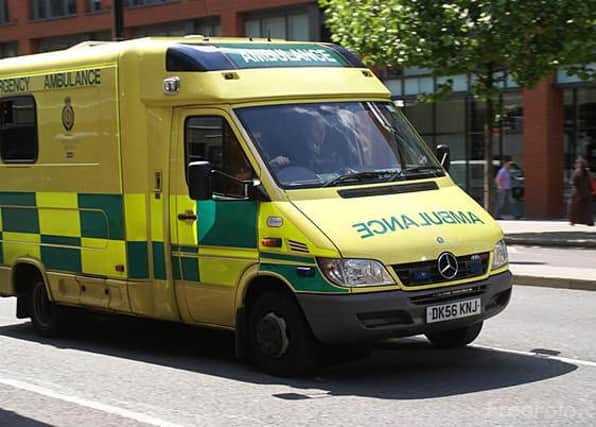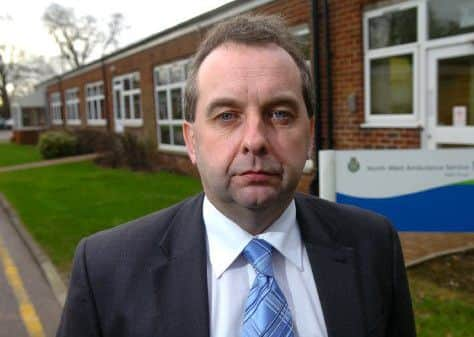Help ease 999 calls NWAS boss pleads


Derek Cartwright, North West Ambulance Service (NWAS) Director of Operations, said staff are facing a huge challenge to meet the eight minute response target after a 25 per cent increase in ‘Red’ calls this year – for those who have a life-threatening or potentially life-threatening conditions.
He also admitted people in pain with minor injuries might have to wait ‘some time’ for an ambulance response, and is relying on volunteer groups to provide support during periods of high activity.
Advertisement
Hide AdAdvertisement
Hide AdHe said: “In previous years we used to see a peak of calls in the winter and this would then drop in the warmer months before starting to climb again as we approached December.


“This is no longer the case. We consistently see high levels of life-threatening 999 calls throughout the year so instead of dropping in the summer, it stays the same and then increases even further the following winter.”
The Trust said it does not have an explanation for the change. Mr Cartwright added: “We regularly publish the message asking the public to use us wisely and only in emergency situations and we’re very grateful to those who heed that message, but the non-urgent calls are not rising in the same way as the extremely urgent calls – those that do need an emergency ambulance response.
“This is by no means unique to NWAS, our ambulance colleagues around the country are seeing similar growth and we have to accept that this is unlikely to change and instead, change the way we operate so we can meet this demand.”
Advertisement
Hide AdAdvertisement
Hide AdNWAS admits a national shortage of paramedics and changes to training of new staff has had an impact on staff resources, but filling vacancies has been one of its priorities during 2015 and since April, 186 road staff and 52 call centre staff have been appointed.
The Trust also recently announced a change to allow easier internal progression for Emergency Medical Technicians to become paramedics.
It has also made changes to the triaging of 999 calls and claims improvements made to the organisation’s clinical structure has meant more people can be either treated at home or can be directed to a more appropriate healthcare service such as a walk-in or GP led centre.
Frontline paramedics and trained call centre staff are able to refer non-urgent callers to Specialist and Advanced Paramedics who can explore their condition in more detail. There is also a dedicated Frequent Caller team.
Advertisement
Hide AdAdvertisement
Hide AdMr Cartwright added: “The ambulance service has come a long way from the ‘scoop and run’ service it started out as.
“Clinical skills have vastly improved and we work much more closely with other support services, as the more help a person with long term conditions receives, the less likely they are to need an emergency ambulance - this in turn frees up those resources to get to emergencies.
“It is true that some patients, with minor conditions or injuries, while they might be in some degree of pain or discomfort, will have to wait some time for an ambulance response or will be advised on a more appropriate pathway of care, as we must prioritise our resources and send ambulances first to those potentially life-threatening conditions.” To help with winter pressures, 16 additional ambulances and 19 rapid response vehicles have gone on the road and volunteer groups such as the Red Cross and St John Ambulance are providing support during periods of high activity.
“It is a circular challenge,” said Mr Cartwright.
“Our life-threatening calls rise, so we attend to and take more people to hospital, this results in a busy, pressured emergency department, which means our handover times can take longer and therefore we can’t get back on the road quickly enough to respond to waiting 999 patients.”
Advertisement
Hide AdAdvertisement
Hide AdApproximately half of the 999 calls received by NWAS are not classed as immediately or potentially life-threatening, and a proportion of these are referred to other services or can wait up to four hours for an ambulance response.
“We’re very proud that during these times of austerity, we have invested in our frontline service. We have increased staffing and vehicles, and we have a wonderful team of dedicated, hard working staff, but these are not the only solution to the challenges we face today.
“The most effective solution lies with the public we serve and we ask for their support this winter.”